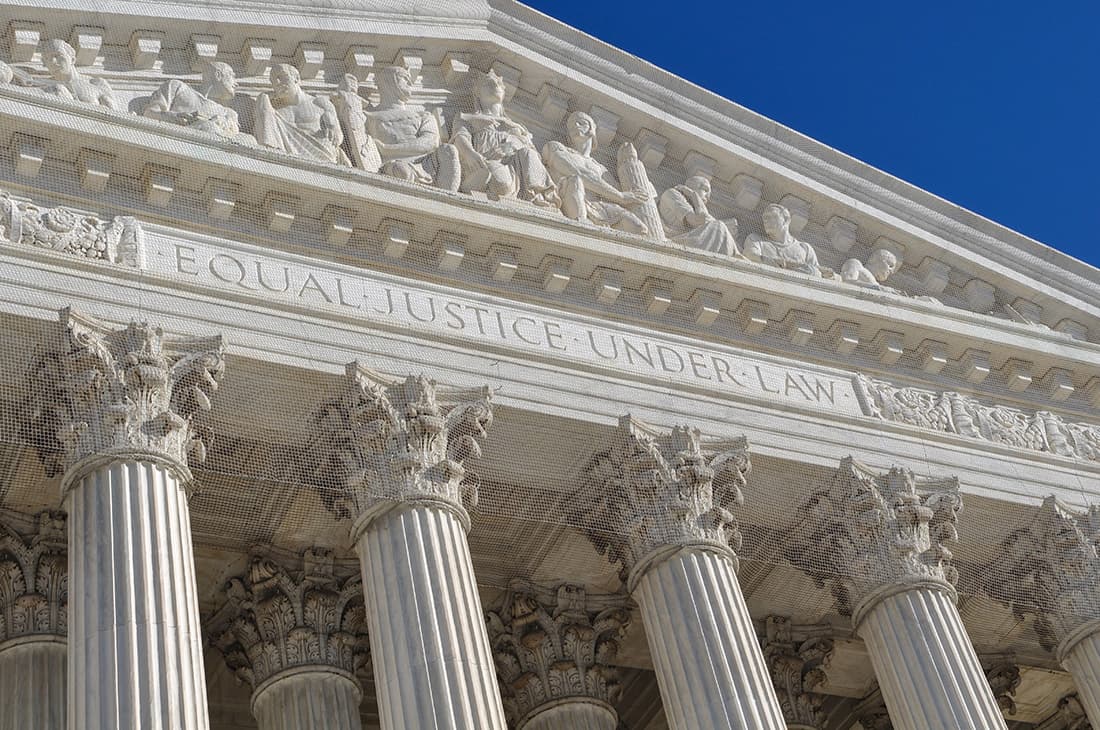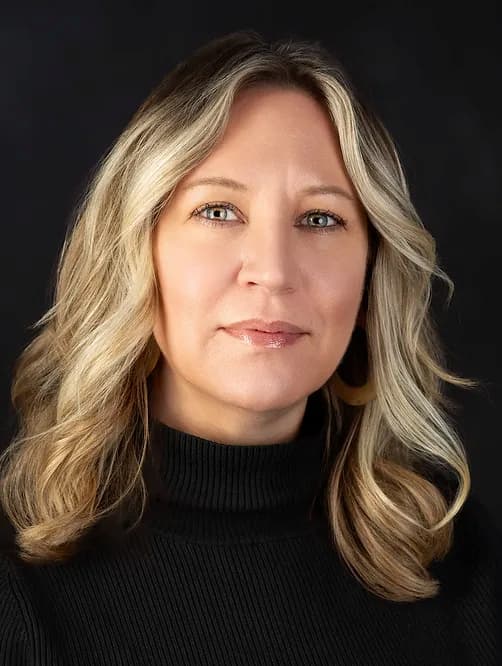SCOTUS to Decide If Domestic Violence Offenders Can Own Guns: Why It Matters

It’s widely expected that the US Supreme Court will make a decision very soon on United States v. Rahimi, a case that threatens to overturn a federal law prohibiting abusers placed under domestic violence restraining orders from possessing guns.
In 2020, a Texas court granted a two-year domestic violence protective order against Zackey Rahimi after he violently assaulted his domestic partner and threatened to shoot her. A condition of his protective order was a ban on owning firearms. Yet Rahimi took part in a string of five shootings over just two months, and police found guns and ammunition in his apartment. He was indicted, and he moved to dismiss the indictment, arguing that the law was a violation of his Second Amendment right to bear arms.
The stakes involved in this Supreme Court decision come down to life and death, say domestic victim advocacy groups, who point out that half of all intimate partner homicides in the United States are committed with a gun. In addition, a woman is five times more likely to be murdered when her abuser has access to a gun.
 Rachel Louise Snyder, photo credit: John Hauschildt
Rachel Louise Snyder, photo credit: John Hauschildt
While we don’t yet know the outcome of this case, we turned to AU Literature and Journalism Professor Rachel Louise Snyder to weigh in on the connections between guns and domestic violence. Snyder is one of the leading voices on the topic of domestic violence, and her writing has appeared in The New Yorker, the New York Times (where she is a contributing opinion writer), and NPR. She is the author of four books, including the critically acclaimed Women We Buried, Women We Burned: A Memoir. Her book No Visible Bruises: What We Don’t Know About Domestic Violence Can Kill Us was named one of the best books of 2019 by the Los Angeles Times, Esquire, Amazon, Kirkus, the Library Journal, the Economist, and BookPage; the New York Times included it in its “Top Ten” books of 2019. It was a finalist for the Kirkus Award, the National Book Critics Circle Award, the LA Times Book Award, and the Silver Gavel Award.
The possibility of domestic abusers legally owning guns has left citizens with many questions about what this could mean for the safety of women, children, and families.
We asked Snyder what this decision means and why it should matter to all of us:
Q. United States v. Rahimi is just the latest in a series of gun cases recently decided by the right-leaning US Supreme Court. Why is this case so important, and why should people be paying attention?
The Rahimi case hinges on whether someone with a domestic violence restraining order has the right to own a gun under the Second Amendment. At the moment, it’s federally prohibited. The fact that the Supreme Court took on this case surprised many people in the domestic violence community, because it seems so painfully obvious that a person with a known record of violence should not have access to guns. (Rahimi himself denounced his own gun ownership in a letter from prison, though it’s hard to predict post-prison behavior).
Q. The statistics speak for themselves: Guns were used in 57 percent of killings of spouses, intimate partners, and relatives in 2020, according to the Centers for Disease Control and Prevention. On average, 70 women are shot and killed by intimate partners every month, according to the nonprofit Everytown for Gun Safety. If the Supreme Court overturns United States v. Rahimi, and domestic abusers can legally own guns, how will this change the overall landscape of domestic violence across the nation?
There is no question that it will make situations of domestic violence much more dangerous for victims. When a gun is accessible to an offender, victims are five times more likely to die. And honestly, even if the Court rules against Rahimi, they're just maintaining the status quo.
If Rahimi is overturned, it’s yet another sign of how little our political leaders value women’s lives, since the vast majority of domestic violence homicide victims are women (men are victims of women’s violence, too, but the levels of violence with female victims are much more severe).
Q. Who will be most impacted if US v. Rahimi is overturned? Can you tell us a bit about victims of domestic violence?
Women and children, full stop. The thing about domestic violence is that it doesn’t de-escalate without intervention. Abusers don’t minimize their violence. So often when a victim fights back, tries to leave, or gets law enforcement involved, the abuser must up the violence to maintain control over that victim. The most dangerous time for a victim is when she or he tries to leave. And being able to access a gun is unquestionably going to make any dangerous situation potentially lethal. A gun, by its very presence, pits two people against one another.
And guns are used in all kinds of ways in a domestic abuse situation: they are visual threats, they are tools of blunt force trauma, they are reminders of who holds the power and who does not. This is true even if the victim is the one who owns the gun; research shows that it’s the presence of the gun that makes it dangerous, not who owns it necessarily.
Q. Most people are unaware that domestic violence has often overlapped with mass shootings. Between 2009 and 2017, more than half of mass shootings were cases of domestic or familial violence, according to Everytown for Gun Safety. In a 2022 New York Times opinion piece, you wrote, “Sandy Hook began with the gunman killing his mother, Uvalde with the gunman shooting his grandmother.”
Why do you think there is such a strong overlap here? And what is the story behind these domestic violence events spiraling into mass shootings?
There are two ways that domestic violence and mass shootings intersect. The first way is what you mention here – that mass shootings begin with a domestic violence incident or homicide. This even happened way back with the very first mass shooting in the United States, the University of Texas tower shooting, where Charles Whitman killed 15 people and wounded dozens more. But he started the night before by killing his wife and mother.
The other way is that the shooter has a history of domestic violence that was never taken seriously enough to convict him. This happened, for example, at both Sutherland Springs and the Orlando Pulse, where those shooters had a record of intimate partner violence and neither one was ever charged.
It just really gets to the ways that domestic violence is sort of an origin story of violence, and somehow we still don’t take it seriously enough in this country.
Q. Your writing has addressed many causes of violence, gun violence, and domestic violence, from isolation and misogyny to mental health and social media. Can you share some of the forces behind violence in the United States and what is the change you would like to see?
That’s a complicated question. The easiest way to think about it is that violence breeds violence. There are social and emotional forces, cultural forces, political forces, and psychological forces.
I think we’re not attuned to the ways in which so much of the populism and authoritarianism here and abroad is a political gesture that mimics in public how private violence operates. It’s not a stretch to say that authoritarian leaders pose the same kind of dangers to the world that abusers do to their victims; they follow the same playbook. Authoritarian leaders want power and control; abusers want power and control. People like Evan Stark, Robert Jay Lifton and Jacqueline Rose have written about this for years. And I think when we separate domestic violence from its political roots, we don’t have the difficult conversations necessary for cultural and political change. We talk about changing police protocols instead of asking what it will take to really address misogyny in our country – which includes jurisprudence, governmental structures, and social mores, for example.
Q. What is the bottom line? As someone who has focused on domestic violence for much of your career, what is the one thing you think Americans should know right now?
That this is a men’s problem, not a women’s problem. Women don’t beat themselves. These systemic problems didn’t originate with women, and they won’t be eradicated only by women. And men are just completely tuned out to this, for the most part. The United States is very good at calling out other countries’ human rights problems; we are less good at trying to solve our own.
